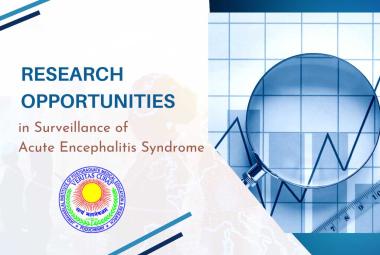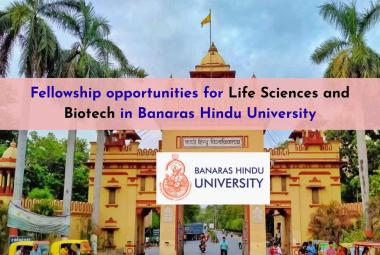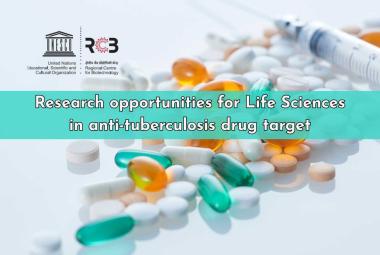About Authors:
Kuntal Pal1, Sampat Kumar Kundu2
1Faculty of Ayurveda, Institute of Medical Sciences, Rajiv Gandhi South Campus,
Banaras Hindu University, Barkachha, Mirzapur-231001
2Gurunanak Institute of Pharmaceutical Science & Technology
Sodepur, West Bengal.
sampatkundu001@gmail.com
{ DOWNLOAD AS PDF }
Abstract
World is running so first, at this moment medicines have to work to maintain the health of the people to give them power to stabilize them. Modern medicine is working from a decades or so, but many traditional systems of medicines also show some beneficial effects in that era. Likewise Kampo, Traditional Chinese Medicine(TCM), Ayurveda & Herbal Medicines. Those kind of medicines can give a patient resistant to protect the disease without less side effects. Pistia stratiotes is a plant which plays a commendable role in that era. It is used in different kind of disease which are described in this mini review.
REFERENCE ID: PHARMATUTOR-ART-2085
INTRODUCTION
Pistia is a genus of aquatic plant in the arum family, Araceae. It comprises, Pistia stratiotes, is often called water cabbage, water lettuce, Jalakumbhi. Its native distribution is uncertain, but probably pantropical, it was first discovered from the Nile near Lake Victoria in Africa. It is now present, either naturally or through human introduction, in nearly all tropical and subtropical fresh waterways. In Ayurveda it is used in many ways, which includes Antifungal, Cytotoxic, antioxidant, Diuretics, Use over different heavy metals & Phosphorous, Detoxification of metals, Reduction of Arsenic etc. And because it can be easily foundable it cost is also very low, round the world in most of the countries it can be found very easily.
Pharmacology
1. Cytotoxicity of fractions of Pistia stratiotes l. On larvae of Culex mosquito and A. salina[1]:
Study showed Crude chloroform and aqueous extracts of the duckweed, Pistia stratiotes L., were bioassayed at various concentrations for larvicidal activities against larvae of Culex mosquito and Artemia salina (brine shrimp). The crude (LC50 = 159.50μg/ml) and chloroform extracts (LC50 = 0.0909μg/ml) exerted mortality at 40μg/ml of 16.67 % and 90.0 % respectively on Culex mosquito larvae, while the aqueous extract (LC50 = >1000μg/ml) at 200μg/ml,resulted in 3.33 % mortality. The crude (LC50 = 2524.22μg/ml) was moderately toxic on A. salina larvae at 1000μg/ml which killed 30.00 % of the test organisms. Whereas the chloroform extract showed lower activity on bine shrimp larvae (3.3 % mortality, LC r 50 > 1000μg/ml). The aqueous extract demonstrated no activity on brine shrimp at all concentrations tested. The study showed that the chloroform extract of P. stratiotes selectively exerts cytotoxic effect on Culex mosquito larvae resulting in high mortality with LC50 = 0.0909μg/ml than on the brineshrimp larvae at LC 50 >1000& 956g/ml. It is therefore recommended that these extracts of P. stratiotes L. should be tested for adulticidal and/or mosquitocidal activity as well as toxicity in higher animals up to man. This may yield a more base line data valuable for use in the development of a microbially active chloroform fraction of the plant for possible use in modern medicine.
2. Anthelmintic Activity[2]:
Study yielded The ethanolic extract of the plant Pistia stratiotes (Araceae) was investigated for activity against Indian earthworms Pheretima posthuma and nematode Ascardi galli. Various concentrations (10, 20, 50 mg/ml) of ethanolic extract were tested, which involved determination of time of paralysis and time of death of the worms. It was compared with Piperazine citrate (15 mg/ml) and Albendazole (20 mg/ml) as standard reference and normal saline as control. The study indicated the potential usefulness of Pistia stratiotes against earthworm infections.
3. Antidermatophytic & Antifungal Activity[3]:
Results indicate The American Type Culture Collection (ATCC) strains and clinical isolates of Trichophyton rubrum, Trichophyton mentagrophytes, Microsporum gypseum, Microsporum nanum and Epidermophyton floccosum were obtained from the Department of Dermatology, Sri Ramachandra Medical College and Research Institute, Porur, Tamil Nadu. The fungal inoculum was prepared from a 21-day-old culture of dermatophytes by scraping with a sterile scalpel and macerating the scrape in 10 ml sterile distilled water. The Minimum Inhibitory Concentration (MIC) and Minimum Fungicidal Concentration (MFC) values of the P. stratiotes extract were determined by microplate dilution method, in which 96-well microtiter plates were prepared by dispensing into each well 95 μl of Sabouraud′s Dextrose Broth (SDB) and 5 μl of the fungal inoculum. A 100 μl of serially diluted P. stratiotes extract ranging from 500 μg/ml to 7.8 μg/ml was added in each well with the 1st well having 500 μg/ml concentrations and the 7th well having a concentration of 7.8 μg/ml. Negative control contained 200 μl of SDB without extract and inoculum. Miconazole in a concentration range of 96 to 1.5 μg/ml was prepared in SDB, containing fungal inoculum and used as reference standard drug (positive control). The final volume in all the wells was 200 μl. The contents of each well were mixed on plate shaker at 300 rpm for 20 s and then incubated at 280C for 10 days. MIC was determined by measuring the absorbance at 450 nm using the ELx 800 universal microplate reader (Biotek Instrument Inc.,) and the MFC was determined by plating 5 μl of samples from the microtiter plate into Sabouraud′s Dextrose Agar (SDA) medium and incubating it at 280C for 10 days. The results indicate that P. stratiotes methanolic extract was found to be the most active against the dermatophytes T. rubrum, T. mentagrophytes andE. floccosum with MIC and MFC values of 250 μg/ml, while against M. gypseum and M. nanum, the values were 125 μg/ml . The values are same for all the 15 replicate experiments. The results show that the trichophyton and epidermophyton species are more resistant to the extract and were inhibited at a higher dosage compared to the microsporum species. The MIC that inhibited the growth of fungi in the SDA medium indicated the fungicidal activity of the extract. The MIC and MFC of the methanolic extract of P. stratiotes were similar and this shows that MIC can be used as an indicator of fungicidal activity as mentioned in earlier studies on the effect of neem on dermatophytes. Miconazole at a concentration of 3 μg/ml inhibited all the clinical isolates and ATCC strains of tested dermatophytes. Determinations of the MIC of miconazole for all the reference strains were performed concomitantly to validate the methodology. The negative control showed no fungal growth. Previous reports on the chemical nature of P. stratiotes leaves showed the presence of alkanes, flavonoids and sterols. Antifungal activity of alkanes, flavonoids and sterols has been described by earlier workers. No data on the antimicrobial activity of P. stratiotes appears to have been published. The results of the present work indicate that P. stratiotes leaves possess antifungal properties, which explains the use of this plant in folk medicine for the treatment of various diseases whose symptoms might involve fungal infections, and underline the importance of the ethnobotanical approach for the selection of this plant in the discovery of new bioactive compounds. Further phytochemical research is needed to identify the active principles responsible for the antifungal activity of P. stratiotes.
4. In vitro Evaluation of Free Radical Scavenging Activity of P.stratiotes[4]:
Results suggest Free radical stress leads to tissue injury and progression of disease conditions such as arthritis, hemorrhagic shock, atherosclerosis, diabetes, hepatic injury, aging and ischemia, reperfusion injury of many tissues, gastritis, tumor promotion, neurodegenerative diseases and carcinogenesis. The present study was aimed to investigate the antioxidant activity of methanolic extracts of P stratiotes leaves by different methods like reductive ability, nitric oxide radical assay and superoxide scavenging activity. PSLE showed strong antioxidant activities in different systems like reducing power, superoxide anion scavenging and nitric oxide radical scavenging activities when compared with different standards such as ascorbic acid and BHT. Plant extract showed concentration- dependent scavenging activity on all reactive species used. Presumably, Pistia stratiotes leaves extract (PSLE) functions as an antioxidant to scavenge free radicals and reduces free radical induced cell injury.
5. Removal of chlorpyrifos by Pistia stratiotes[5]:
Report shows that the potential of water lettuce (Pistia stratiotes L.) to remove chlorpyrifos in water was investigated under laboratory greenhouse conditions. At initial chlorpyrifos concentrations of 0.0, 0.1 and 0.5 mg/L, the relative growth rates (RGR) of P. stratiotes were not significantly different. In contrast, in the presence of 1 mg/L chlorpyrifos the RGR was significantly inhibited, giving an observed fresh weight based RGR(FW) for P. stratiotes from day 0 to 7 of - 0.036 and -0.023 mg/g/day, respectively. The maximum removal of chlorpyrifos by P. stratiotes, when chlorpyrifos was at an initial culture concentration of 0.5 mg/L, was 82% and 87%, respectively, with disappearance rate constants under these conditions of 2.94, 10.21 and 12.14 microg h(-1) for the control (no plants), and with P. stratiotes respectively, giving actual corrected plant removal rate constants of 7.27 and 9.20 microg h(-1) for P. stratiotes respectively.
6. Aerobic and anaerobic decomposition of Pistia stratiotes leachates from a tropical eutrophic reservoir[6]:
Report shows that the present study discussed the kinetic aspects of leachate decomposition from an aquatic macrophyte, Pistia stratiotes L (water lettuce). This species was collected from Barra Bonita Reservoir located in the State of São Paulo (Brazil). Decomposition chambers were prepared with high molecular weight (HMW), low molecular weight (LMW) and integral (INT = HMW + LMW) dissolved organic matter (DOM) diluted with reservoir water. The samples were incubated at 20 degrees C, in darkness and under aerobic or anaerobic conditions. For 79 days, the concentrations of dissolved oxygen (DO) and organic carbon (OC) were measured. For calculating the deoxygenation coefficients (k d) and maximum oxygen consumption (COmax) the concentration of DO was integrated and fitted to a first-order kinetics model, which also applied to the depletion of OC concentrations. The COmax of INT incubations were 4% higher than the sum of HMW and LMW fractions. The deoxygenation coefficients, k d, had the same order of magnitude for all treatments. In relation to carbon decay, regardless of the availability of oxygen, the INT DOM also showed higher mineralisation. These results suggest that the leachate mineralisations are short-term processes; when the fractionation of the leachates occurs, the LMW had organic compounds with more accessibility for heterotrophic metabolism. On the other hand, when compared to INT DOM, the HMW and LMW were less consumed suggesting an interaction of the reactivity of the leachate. Our data suggest that in the Barra Bonita Reservoir the mineralisation of P. stratiotes leachates occurs through two competitive pathways (i.e. mineralisation of the labile compounds and formation of recalcitrant organic resources and their mineralisation) in which the oxygen availability and the molecular mass of DOM can interfere in the rates of reactions.
7. Response of phytochelatins and their relationship with cadmium toxicity in a floating macrophyte Pistia stratiotes at environmentally relevant concentrations[7]:
Report shows that an indoor experiment was undertaken to investigate the response of phytochelatins and their relationship to cadmium toxicity in Pistia stratiotes L., a freefloating macrophyte, exposed to low concentrations of cadmium typically found in realistic environments. Cadmium concentrations of 0.01 to 0.08 microM had no toxic effects on the growth of this plant, as indicated by no significant changes in the fresh weights of leaves and roots and the slight induction of phytochelatins in plant tissues, whereas cadmium concentrations of 0.16 to 1 microM were toxic, and cadmium toxicity increased with the increase of cadmium concentrations in solutions, accompanied by the dramatic production of phytochelatins in plant tissues, especially in roots. There was a positive correction between root phytochelatin levels and cadmium toxicity, as measured by the growth inhibition rate of the root fresh weight. The results suggested that phytochelatins in aquatic macrophytes can serve as sensitive biomarkers for heavy metal toxicity in a moderately polluted water environment.
8. Phytoremediation potential of Pistia stratiotes to modify antibiotic growth promoters, tetracycline, and oxytetracycline, in aqueous wastewater systems[8]:
Report shows that antibiotics are frequently used in the United States as feed efficiency promoters and medicines for livestock that is destined for human consumption. These antibiotics are released into the environment through the runoff and wastewater streams from animal feedlots and land applications of manure. The exposure of microorganisms to these antibiotics has reportedly resulted in the development of resistant species of microorganisms, which in turn can lead to human health hazards. Phytoremediation of these antibiotics can be a useful tool for countering this problem. Aquatic plants, Pistia stratiotes (water lettuce), was used for studying phytoremediation of tetracycline (TC) and oxytetracycline (OTC) from aqueous media. TC and OTC are two of the most commonly used tetracyclines in veterinary medicine. P. stratiotes gave high antibiotic modification rates of both antibiotics. Kinetic analyses dismiss direct enzyme catalysis; the modification rates decreased with increasing OTC concentrations. Sterile, cell-free root exudates (filtered through 0.2 microm membranes) from both species also exhibited comparable antibiotic modification rates. The involvement of root-secreted metabolites in antibiotic modification is suggested. The changes in the UV absorbance spectra of OTC during treatment with the root exudates confirmed the modification.
9. Pharmacological activities of Pistia stratiotes[9]:
Study shows that the calcium channel blocking activity of a methanol extract of the whole plant was demonstrated using isolated segments of rabbit jejunum and confirmed via inhibition by pretreatment with verapamil. Additionally, the plant extract exhibited dose-related bronchodilating activity on isolated guinea pig trachea and neuromuscular blocking action, which was also doserelated. The plant extract caused a decrease in blood pressure in anaesthetised rats. After a 10 μg dose of the extract, systolic and diastolic blood pressures fell by 18% and 10%, respectively. Further doses of the plant extract produced slight decreases in blood pressures in anaesthetised rats. The systolic, diastolic and mean blood pressures before the extract were all significantly higher than those following the administration of the extract.
CONCLUSION:
Now a days when the world keep a turn to the Harbal or Ayurvedic medicine, & Billions of people using those medicine, because of its more effectiveness, at that era Watter Lettuce can perform a major role. It shows a variety of actions, which increase the probability & interest of a researcher & companies to research & made products through it.
REFERENCE:
1. M D Mukhtar, A Sani, A A Yakasai. Cytotoxicity of fractions of Pistia stratiotes l. On larvae of Culex mosquito and A. salina. Animal Research International. 2004; 1(2):95-99.
2. H. K. Sundeep Kumar, Anindya Bose, Arundhuti Raut1, Sujit Kumar Sahu and M. B. V. Raju. Evaluation of Anthelmintic Activity of Pistia stratiotes Linn. Journal of Basic and Clinical Pharmacy. 2010;001(002):103-105.
3. Premkumar VG, Shyamsundar D. Antidermatophytic activity of Pistia stratiotes. Indian J Pharmacol 2005;37:127-8.
4. Megha Jha, N. Ganesh, and Versha Sharma. In vitro Evaluation of Free Radical Scavenging Activity of Pistia stratiotes. 2010;2(1):180-184.
5. Prasertsup P, Ariyakanon N. Removal of chlorpyrifos by water lettuce (Pistia stratiotes L.) and duckweed (Lemna minor L.). Int J Phytoremediation. 2011 Apr;13(4):383-95.
6. Bianchini Jr I, Silva RH, Cunha-Santino MB, Panhota RS. Aerobic and anaerobic decomposition of Pistia stratiotes leachates from a tropical eutrophic reservoir (Barra Bonita, SP, Brazil). Braz J Biol. 2010 Aug;70(3):559-68.
7. Wang C, Wang LY, Sun Q. Response of phytochelatins and their relationship with cadmium toxicity in a floating macrophyte Pistia stratiotes L. at environmentally relevant concentrations. Water Environ Res. 2010 Feb;82(2):147-54.
8. Gujarathi NP, Haney BJ, Linden JC. Phytoremediation potential of Myriophyllum aquaticum and Pistia stratiotes to modify antibiotic growth promoters, tetracycline, and oxytetracycline, in aqueous wastewater systems. Int J Phytoremediation. 2005;7(2):99- 112.
9. K. J. Achola, A. A. Indalo and R. W. Munenge. Pharmacological activities of Pistia stratiotes. Pharmaceutical Biology. 1997, Vol. 35, No. 5. Pages 329-333.
|
PharmaTutor (ISSN: 2347 - 7881) Volume 2, Issue 1 Received On: 12/012/2014; Accepted On: 17/12/2014; Published On: 15/01/2014 How to cite this article: SK Kundu, K Pal, Pharmacological Updates of Pistia Stratiotes (Water Lettuce/ Jalakumbhi): A Mini Review, PharmaTutor, 2014, 2(1), 21-25 |
NOW YOU CAN ALSO PUBLISH YOUR ARTICLE ONLINE.
SUBMIT YOUR ARTICLE/PROJECT AT articles@pharmatutor.org
Subscribe to Pharmatutor Alerts by Email
FIND OUT MORE ARTICLES AT OUR DATABASE









